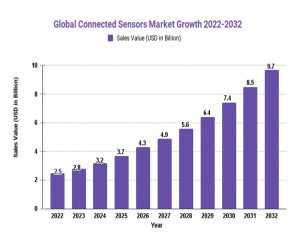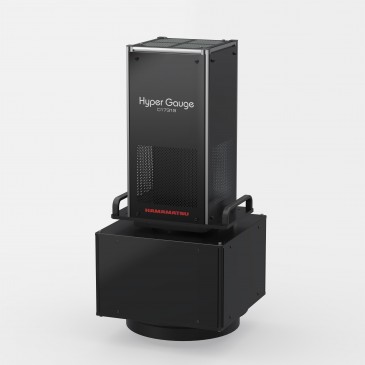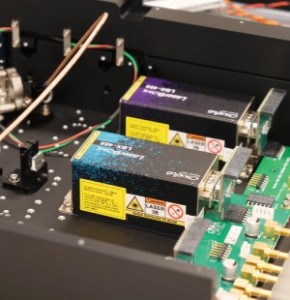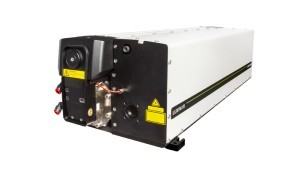
The Connected Sensors Market is an emerging industry comprised of sensors connected to the internet, enabling them to collect and transmit data in real time. These can be embedded in various devices such as home appliances, industrial equipment, vehicles, and infrastructure.
The global Connected Sensors Market size is expected to surge from USD 2.5 Bn in 2022 to a projected value of USD 9.7 Bn by 2032, at an annual growth rate (CAGR) of 14.8% during the forecast period. This growth is being spurred by several factors, such as increasing demand for IoT devices, rising adoption of smart sensors, and rising demands for real-time monitoring and control systems.
The market can be segmented based on sensor type, connectivity, application, and geography. Temperature sensors, pressure sensors, humidity sensors, and motion sensors are some of the popular choices; while wired and wireless sensors offer different levels of connectivity. By application, the market includes smart homes, smart cities, industrial automation, healthcare services as well as others.
Key Takeaways
- The Connected Sensors Market size is expected to grow from USD 2.5 Bn in 2022 to USD 9.7 Bn by 2032, at a Compound Annual Growth Rate (CAGR) of 14.8% over the forecast period.
- The demand for IoT devices, the rising adoption of smart sensors, and an ever-increasing need for real-time monitoring and control are the primary driving forces in this market.
- The market can be segmented based on sensor type, connectivity type, application, and geography.
- North America is expected to dominate the IoT device market due to the presence of major players, technological advancements, and growing adoption rates.
- Asia Pacific is forecast to experience the highest compound annual growth rate during this forecast period, due to an increasing number of IoT projects, government initiatives, and rising demand for connected sensors across industries such as automotive, manufacturing, and healthcare.
Regional Snapshot
North America: North America is the leading market for connected sensors due to the presence of major players, technological advancements, and increasing adoption of IoT devices.
Europe: A promising market for connected sensors is being spurred on by the increasing adoption of smart homes and cities.
Asia Pacific: This region boasts the fastest-growing market for connected sensors, driven by an increase in IoT projects, government initiatives, and rising demand in industries such as automotive, manufacturing, and healthcare.
Middle East & Africa: The market for connected sensors is on the rise, driven by the increasing adoption of smart cities and infrastructure.
Latin America: The market for connected sensors is on the rise, driven by the increasing adoption of IoT devices and the demand for real-time monitoring and control across various industries.
Market Dynamics
Drivers
Growing demand for Internet of Things devices: The growing popularity of IoT devices is one of the primary driving forces in the connected sensors market. IoT requires sensors to collect and transmit data, so as the need for IoT devices grows so does that for connected sensors as well.
Rising Adoption of Smart Sensors: Smart sensors offer several advantages over traditional ones, such as improved accuracy, faster response times, and greater dependability. This trend is driving the growth of the connected sensors market.
Real-Time Monitoring and Control Needed: Connected sensors enable real-time monitoring and control of various systems and devices, which is becoming increasingly essential in industries such as manufacturing, healthcare, and transportation.
Technological Advancements: Advances in technology are propelling the development of more sophisticated sensors, offering new opportunities across a range of industries.
Government Initiatives: Governments around the world are investing in IoT and related technologies, which is fueling growth in the connected sensors market.
Restraints
Security Risks: Connected sensors are vulnerable to cyber attacks that could compromise the data they collect and transmit. This has become a major worry for many industries, which are hesitant to adopt connected sensors due to security risks.
High cost: Connected sensors tend to be more costly than traditional sensors, making them less appealing in certain industries.
Absence of Standards: Lacking industry standards for connected sensors makes it difficult for companies to incorporate them into their existing systems.
Complex Integration: Integrating connected sensors into existing systems can be a time-consuming and complex process, which could pose an obstacle to adoption.
Limited battery life: Many connected sensors rely on batteries, which have a finite lifespan and must be replaced periodically, adding to maintenance expenses.
Opportunities
Emerging Applications: The connected sensors market is rapidly developing, with new applications emerging across industries such as agriculture, construction, and energy. This presents significant growth prospects for the sector.
Integration with AI and machine learning: Connected sensors can be linked together with AI and machine learning for even more sophisticated analytics and insights, opening up new market prospects.
Increased Demand for Smart Homes and Smart Cities: The growing popularity of connected sensors in residential applications, energy management systems, and urban infrastructure is creating new market opportunities.
Growing Demand for Wearables and Health Monitoring Devices: The increasing popularity of wearables and health monitoring solutions has created new business opportunities in the healthcare industry for connected sensors.
Expansion into Developing Economies: As developing economies continue to invest in infrastructure, the connected sensors market has an immense opportunity to expand into these markets.
Challenges
Security Concerns: Security is a major challenge facing the connected sensors market. Companies need to invest in effective security measures that safeguard data and devices from cybercriminals.
Limited battery life: Many connected sensors rely on batteries, which have a finite lifespan and must be replaced periodically. This presents an issue for industries that require continuous monitoring.
Complex Integration: Integrating connected sensors into existing systems can be a time-consuming and complex undertaking, which may present as an impediment to adoption.
Lack of Industry Standards: Without industry standards for connected sensors, companies may struggle to incorporate them into their existing systems.
Privacy Concerns: Connected sensors can collect a vast amount of data, raising privacy issues. Companies need to guarantee they are collecting and using this data responsibly and ethically.
Recent Developments
- In March 2021, Infineon Technologies announced the launch of a new family of radar sensors for the automotive market. The sensors are designed to enable 360-degree sensing capabilities, making them ideal for advanced driver assistance systems (ADAS) and autonomous driving applications.
- In February 2021, STMicroelectronics announced the launch of a new range of pressure sensors for industrial applications. The sensors are designed to be highly accurate and reliable, making them ideal for use in a range of industrial applications.
- In January 2021, Honeywell announced the launch of a new range of smart sensors for the HVAC market. The sensors are designed to provide real-time data on temperature, humidity, and air quality, enabling more efficient and effective HVAC control.
- In November 2020, Bosch announced the launch of a new range of intelligent air quality sensors for the smart home market. The sensors are designed to detect a range of pollutants and provide real-time data on indoor air quality.
- In October 2020, Texas Instruments announced the launch of a new range of wireless connectivity solutions for IoT devices. The solutions are designed to enable low-power wireless connectivity for a range of IoT applications.
Key Market Segments
Type
- Hardware
- Software
- Network Components
Application
- IT and Telecommunications
- Manufacturing
- Transportation and Logistics
- Defense and Government
- BFSI
- Healthcare
- Retail
- Energy and Utilities
- Others
Key Market Players
- IBM
- Bosch
- Google Inc.
- Samsung
- HTC Corporation
- Qualcomm Inc
- Honeywell International Inc
- Microsoft Corporation
- Siemens
- ARM Holdings
- Intel Corporation
- Samsung Electronics Co. Ltd.




































 Back to News
Back to News



























